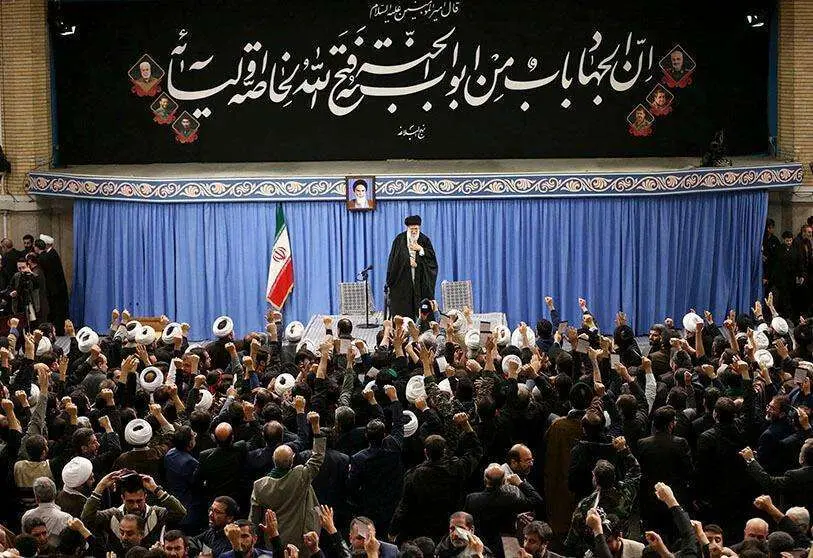Iran sanctions shake the 'Shia Crescent' partnership

The Iranian-created 'Shia Crescent' of Iraq, Lebanon and Syria is going through a potentially fatal phase for a reason more related to insolvency than to military aggression by its rivals. In all the years since the 1960s, Islamists in Iran have been struggling to create a political super-unity out of the Middle East's Shia population, which is generally distributed across Iran, Iraq, Syria, Lebanon and Bahrain. The way these countries are located on the map of the Middle East can be seen as a curve running from the Iranian country in the northeast to Lebanon in the southwest. The 'Shia Crescent' is a political and sectarian term used by Iran to cover up its expansionist ambitions and express its ambition to engulf Iraq, Syria and Lebanon in order to find an outlet in the Mediterranean.
The term was coined in 2004 by Jordan's King Abdullah II, prior to Iran's interference in Iraq's 2005 elections. In recent years, the term has come to identify areas under Iranian influence or control, as the Islamic Republic of Iran has sought to unite all Shia Muslims under one banner. If we look more closely at the map, we can see that Syria lies right in the middle of the curve. As such, it constitutes the most strategic point of the Crescent. If Syria falls, the Shia Crescent will be split in half, which is tantamount to its doom. Not only would Syria be snatched from the clutches of Shia Islamism, but also Hezbollah's life vein in Lebanon would be cut off. On the other hand, this concept shows the growing political clout of Shiites in the Middle East.

In light of the destabilisation of the "Shia Crescent", Iran is doing its best to save it. Ideologies and resistance harangues, sectarian parallels and conspiracy theories are slowly but surely being demolished and replaced by economic concerns and grandiose aspirations towards citizenship and identities. After the decline of the Shia Crescent, hegemony in the region would fall to Saudi Arabia. These are compelling reasons why the Islamic Republic often considers Syria as its 35th province ahead of the oil-rich province in the south-west of the Islamic State of Iran that used to be a major theatre of conflict during the Iran-Iraq War (1980-1988), Khuzestan. Analysts believe that the so-called 'Shia Crescent' is threatened with collapse due to exacerbating crises of dollar shortages, institutional chaos and economic crises, as well as civil strife.
While Iran and Syria are subject to harsh US and international political and economic sanctions, Iraq enjoys a large amount of oil money, but is not under its direct control to dispose of it, as it is deposited with the US Federal Reserve. In light of the sanctions imposed on Iran, the US exercises tight control over the movement of funds available to the Baghdad government, while recently this control has been tightened sufficiently to strangle the Iranian regime. The sanctions have become so pervasive that Iran was forced to pay for its purchases from Tehran in dinars, causing a sharp drop in the value of the Iraqi dinar and the collapse of the Iranian riyal.

Iraqi oil revenues are registered with the US Federal Reserve, and most Iraqi business dealings abroad are facilitated electronically under its direct supervision, so that the US ensures that no official transfers reach Iran or Syria under sanctions imposed on them. In the summer of 2015, the US authorities froze the account of the Central Bank of Iraq at the Federal Reserve Bank to prevent Daesh from benefiting from these funds. As for Lebanon, its mostly mafia-like political ruling class works together to systematically plunder the country. Moreover, Lebanon has been institutionally paralysed and financially bankrupt since 2020.
To gain access to state institutions, Iran forged alliances with local political figures and parties. It is not enough to form militias and armed proxies if they cannot control state decisions and infrastructure. It is always easy for Iran to forge alliances with corrupt politicians, either by bribing them directly or by promising them positions through which they can access state resources. For example, it is no coincidence that Hezbollah's allies in Lebanon are the corrupt figures that the protesters want to hold accountable. These allies, such as parliamentary speaker Nabih Berri and former foreign minister Gebran Bassil, benefited from this alliance with Baghdad, but also gave Hizbollah the access it wanted.

The party holds 13 seats out of 128 in the Lebanese parliament. However, thanks to its allies, it controls more than 70 MPs. The same applies to the government and other state institutions. Iran has placed Syria at the forefront of its regional and international strategy, as controlling it ensures that it can lay siege to its Gulf and Turkish opponents and place them in the jaws of pincers in preparation for isolating them and recognising Iranian influence in the region, and strengthening Iran's position. On the other hand, control of Syria guarantees to turn the idea of the Shia Crescent project into a well-established geographical and social reality and a coherent strategic resource that can be employed in the framework of regional and international relations.








